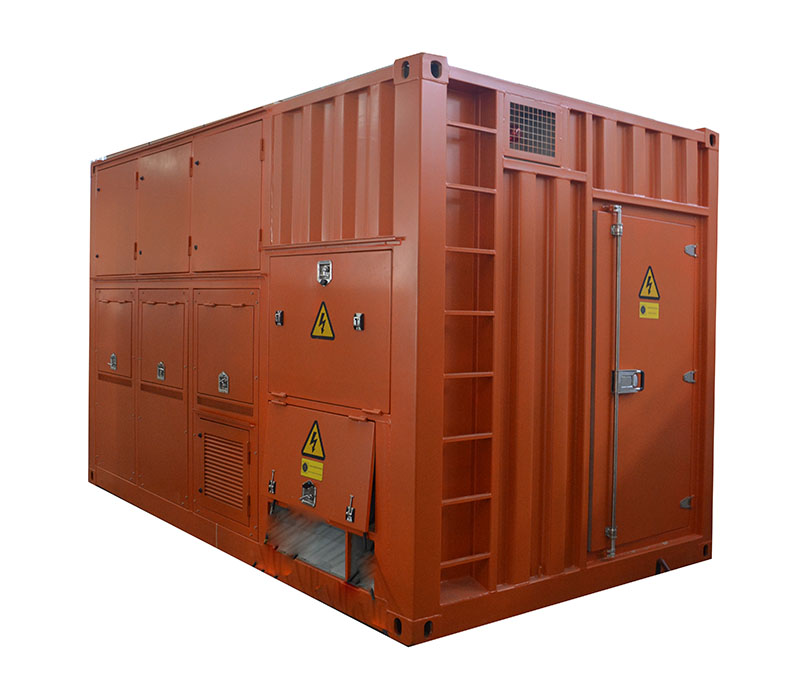Related content
- 2025-11-05Sunwin Rack-mounted Liquid-cooled Load BankRack-mounted Liquid-cooled Load Bank from Sunwin represents a leap forward in data center testing technology. Designed for the green, high-density data center of tomorrow, it tackles the core challenges of energy consumption and heat dissipation head-on. By adopting advanced liquid cooling to directly remove heat with remarkable efficiency, it fundamentally surpasses the limitations of traditional air-cooled load banks.
- 2025-10-02Sunwin Air-Cooled + Liquid-Cooled Hybrid Rack-Mounted Load Bank: An Efficient Solution for Data Center Testing
In data center testing scenarios, traditional load banks with a single heat dissipation method often face dilemmas such as "insufficient heat dissipation for high power" or "difficulty in adapting to small spaces". Sunwin, a leader in the power testing equipment field, has innovatively launched the air-cooled + liquid-cooled hybrid rack-mounted load bank. By integrating the advantages of two heat dissipation technologies, it provides professional support for data center equipment performance verification and system stability testing. - 2025-09-18Sunwin - EV AC Charging Pile Aging System: Double Guarantee of Quality and EfficiencyWith the rapid development of the new energy vehicle industry, the performance stability and factory quality of AC charging piles are of vital importance. The Sunwin - EV AC charging pile aging system is specially designed for the factory aging test of finished AC charging piles, making every effort to ensure the stable performance of finished charging piles and the qualified rate of outgoing products.
This system supports multiple standards and can meet the aging test requirements of national standard single - phase/three - phase, European standard single - phase/three - phase, and American standard charging pile products. - 2025-09-15Sunwin AC Single Phase / 3 Phase Non-linear Load BankIn scenarios such as data centers and network computer rooms that rely on UPS power supplies and inverter power supplies, traditional linear load banks are unable to simulate the real characteristics of non-linear loads like computers and network equipment, resulting in deviations in the actual performance testing of power supply equipment. Sunwin, deeply engaged in the power testing field, has launched the Sunwin RCD AC Single/Three-Phase Non-Linear Load Bank, which addresses this pain point with professional technology and builds a solid defense line for power supply safety.
To choose a suitable load bank, the following aspects should be considered:
1. Load type:
Choose a suitable load type according to actual needs, such as resistive load, inductive load, capacitive load, etc. Different types of loads have different effects on the equipment, and need to be selected according to the actual scenario of the test or application.
2. Load capacity:
Load capacity refers to the maximum load current or power that the load bank can withstand. When selecting, the load capacity should be determined according to actual needs to ensure that the equipment is within the normal working range, and consider the possibility of future business development and equipment upgrades, and reserve a certain load capacity margin.
3. Control mode:
There are two control modes for load banks: manual control and automatic control. Manual control is suitable for occasions with low load requirements, while automatic control can achieve precise load control and improve the working efficiency of the equipment. When selecting, it is necessary to select according to actual needs and control accuracy requirements.
4. Load accuracy and stability:
Load accuracy refers to the error between the load output by the load bank and the set value. When selecting, you should try to choose a load bank with high accuracy to ensure the working performance of the equipment. At the same time, stability is also an important indicator to measure the performance of the load bank. It is necessary to select a load bank with good stability to ensure stable operation and accuracy of test results during long-term work.
5. Response speed:
The response speed of the load bank refers to the time from receiving the instruction to outputting the load. When selecting, you should try to choose a load bank with a fast response speed to improve the working efficiency and test efficiency of the equipment.
6. Frequency range and impedance range:
According to the test requirements, select a load bank with a frequency range that matches the test requirements to obtain the best test results. At the same time, the impedance range is also a factor that needs to be considered. You need to select a load bank with an appropriate impedance range to ensure the accuracy of the test.
7. Control interface and protection function:
The load bank is usually equipped with a variety of control interfaces, such as RS-232, USB, Ethernet, etc. When selecting, you need to consider the connection method and compatibility with the test equipment or computer. In addition, the load bank should have safety functions such as overload protection and overheating protection to protect the safety of the equipment and the circuit being tested.
8. Cost and budget:
On the premise of meeting the test requirements, a cost-effective load bank should be selected according to the budget. At the same time, the use cost of the load bank, such as energy consumption and maintenance cost, must also be considered.
In summary, choosing a suitable load bank requires comprehensive consideration of load type, load capacity, control method, load accuracy and stability, response speed, frequency range and impedance range, control interface and protection function, as well as cost and budget. By carefully comparing and evaluating the performance and characteristics of different load banks, select the load bank that best meets actual needs and budget.
Please give us a message


